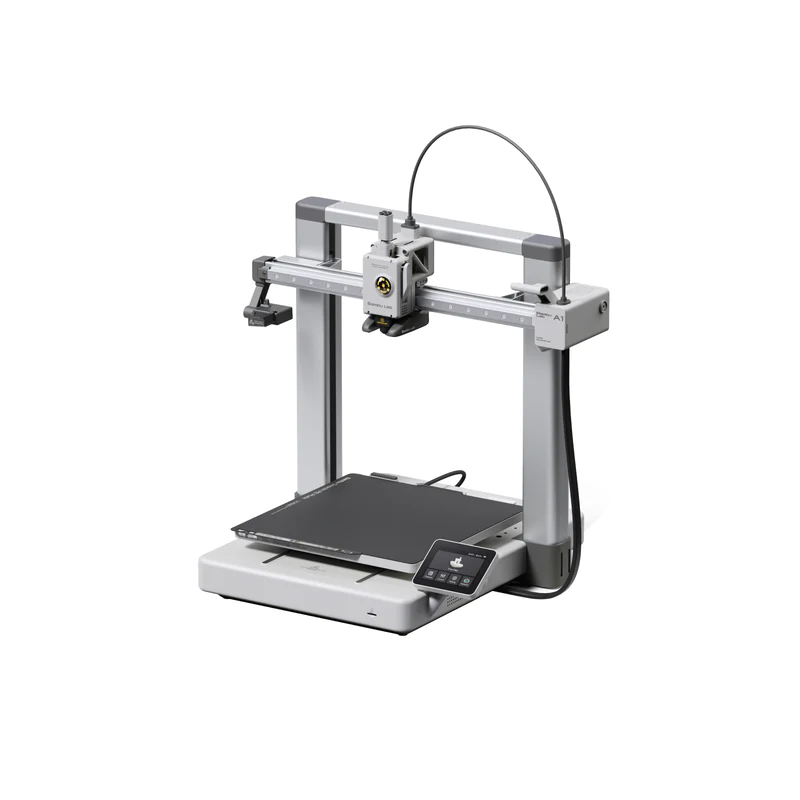Bambu Lab A1 Review: Game-Changer or Hype?

Bambulab A1
Bambulab3D printer - FDM
AI summary
Introduction
The Bambu Lab A1 emerges as a compelling addition to the evolving 3D printing landscape, showcasing a blend of affordability, versatility, and performance. While it deviates from Bambu Lab's initial focus on CoreXY systems, it maintains the brand's commitment to innovation and user-friendly design. This review delves into the A1's features, usability, and how it compares to its siblings—the A1 Mini and the CoreXY P1 and X1 series.
Design and Build Volume
With a build volume paralleling its CoreXY counterparts, the A1 presents itself as a neatly designed machine that blends in well with Bambu Lab's product line. Its construction offers a balance of robustness and precision, thanks to the employed materials and mechanical design choices. The A1's filament management and purging system stands out for its efficient use of the build area, addressing one of the notable limitations of previous models.
Performance and Print Quality
The A1 doesn't just aim for speed but also ensures that this velocity translates into tangible print quality. With mechanisms like input shaping and pressure advance calibration finely tuned, it competes head-on with other high-speed printers in the market. The integrated direct extruder system further contributes to the printer's reliability and ease of maintenance, supported by a user-friendly nozzle replacement process.
Multi-Color Capabilities
Multi-color printing is one of the standout features of the A1, facilitated by the optional AMS Lite unit. This system, though it may entail additional material usage due to the purging process, proves its worth by delivering consistent and quality multi-color prints. It's a testament to Bambu Lab's commitment to making advanced printing techniques accessible and reliable.
User Experience and Connectivity
The A1 reinforces the ease-of-use factor with integrated WiFi, straightforward setup and operation, and the option for cloud connectivity. The included touchscreen and mobile app enhance the user experience by offering intuitive control and monitoring capabilities. However, the A1's approach to connectivity and its closed-source nature might not align with the preferences of users seeking more open and customizable platforms.
Ecosystem and Software
Bambu Lab continues to excel in creating an ecosystem that marries hardware with software seamlessly. Bambu Studio, as part of this ecosystem, stands out for its robust feature set, ease of use, and excellent default profiles. While the closed-source aspect of the firmware and hardware might deter some users, the overall package remains appealing for those prioritizing reliability and out-of-the-box functionality over tinkering potential.
Conclusion
The Bambu Lab A1 is a noteworthy contender for hobbyists and newcomers to 3D printing, offering a solid combination of speed, print quality, and ease of use. Its positioning in the market is strategic, providing a competitive alternative to both higher and lower-end models within Bambu Lab's range as well as against other brands. While it might not cater to all needs—especially for those interested in high-temperature materials—the A1 stands as a compelling choice for enthusiasts focused on PLA and PETG prints. Yet, its appeal might be limited for the maker community interested in open-source solutions and extensive material compatibility. Ultimately, the A1 signifies Bambu Lab's ongoing dedication to pushing the boundaries of accessible, high-quality 3D printing technologies.
